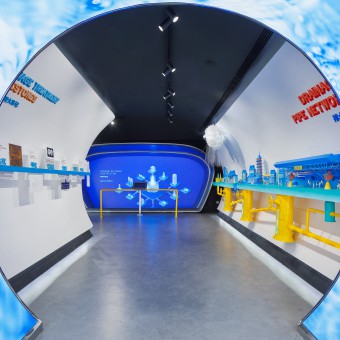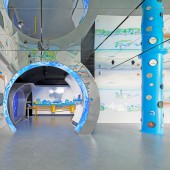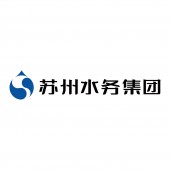Suzhou Drainage Museum Exhibition Hall by Whale Rider Architecture |
Home > Winners > #144029 |
 |
|
||||
| DESIGN DETAILS | |||||
| DESIGN NAME: Suzhou Drainage Museum PRIMARY FUNCTION: Exhibition Hall INSPIRATION: Inspired by submarines, the design team further used pipe elements commonly seen in sewage treatment to simulate an immersive space that combines scientific knowledge and activities, where all age groupscan be drawn in to learn about environmental protection. Via therealistic exhibition design, the conventional dull science popularization is turned into a relaxing and joyful journey of exploration, instilling sewage treatment knowledge into visitors through audiovisual and hands on activities UNIQUE PROPERTIES / PROJECT DESCRIPTION: This submarine themed sewage treatment science museum features the form fusion of modern treatment equipment and the elements of cockpits, portholes and pipes. Supplemented by rational moving lines, it shows the whole process of effluent treatment wittily and progressively. Various modern multimedia devices are applied to enrich educational modes and create strong senses of joy, technology and ritual, raising the ecological awareness of visitors via immersive experiences of edutainment. OPERATION / FLOW / INTERACTION: This project sheds the passive audiovisual mode of science popularization, and fully utilizes multimedia devices to enrich education forms. The areas for hands on activities are set according to the moving lines and the sewage treatment process, which are available for operation and display, showing the amazing process that turns sewage into reclaimed water. The reclaimed water pool outside tangibly displays the results of sewage treatment, visualizing the purity of reclaimed water for visitors. PROJECT DURATION AND LOCATION: The project design lasted from June 10 to September 18, 2021. And the science museum is located near Shihu Bridge in Suzhou, Jiangsu Province. FITS BEST INTO CATEGORY: Interior Space and Exhibition Design |
PRODUCTION / REALIZATION TECHNOLOGY: The project is mainly built with environmentally friendly materials, whose textures, colors and grains create a simple visual effect and set a very modern tone. The material selection enhances the relaxing and joyful ambiance, and more meaningfully, puts the concept of sustainable development into practice, which resonates with the project positioning as a science museum for popularizing the knowledge about sewage treatment and ecological environment protection. SPECIFICATIONS / TECHNICAL PROPERTIES: The service area is about 58 square kilometers, the service population is about 500,000 people, and the daily treatment capacity is 180,000 tons. TAGS: Popular Science Education, Ecological Protection, Immersive Experience, Multiple Interaction Modes, Edutainment RESEARCH ABSTRACT: The picturesque scenery of Suzhou City in China isattributed to its advanced drainage system, which is worthy of local residents and nonnative visitors to learn from. Drawing on the drainage system, this project simplifies the complicate water purification process into the steps of precipitation, filtration, adsorption, deep treatment and disinfection, presenting the complex process lucidly. And the content displayed in multiple dimensions gives visitors a scientific and joyful experience. CHALLENGE: The design difficulty lay in the public resistance to the stereotype of traditional science museums, incapacitating the effect on science popularization. To address the issue above, the project provides scientific and joyful experiences for visitors, and motivates them to explore via immersive multisensoryinteract ADDED DATE: 2022-08-29 08:03:21 TEAM MEMBERS (8) : Bifeng Li, Wenjing Lu, Kaili Hu, Dalian Liu, Chao Shi, Yubao Fan, Yuan Sun and Han Zhang IMAGE CREDITS: Whale Rider Architecture, 2022. |
||||
| Visit the following page to learn more: http://whalerider.cn | |||||
| AWARD DETAILS | |
 |
Suzhou Drainage Museum Exhibition Hall by Whale Rider Architecture is Winner in Interior Space and Exhibition Design Category, 2022 - 2023.· Read the interview with designer Whale Rider Architecture for design Suzhou Drainage Museum here.· Press Members: Login or Register to request an exclusive interview with Whale Rider Architecture. · Click here to register inorder to view the profile and other works by Whale Rider Architecture. |
| SOCIAL |
| + Add to Likes / Favorites | Send to My Email | Comment | Testimonials | View Press-Release | Press Kit |
Did you like Whale Rider Architecture's Interior Design?
You will most likely enjoy other award winning interior design as well.
Click here to view more Award Winning Interior Design.








